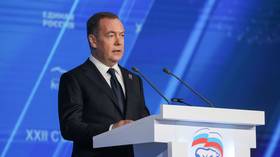Solar energy now same price as conventional power in Germany, Italy, Spain - report

Solar energy now costs the same as conventionally generated electricity in Germany, Italy and Spain, a report has revealed. The research has warned, however, that high installation costs are impeding other countries from achieving grid parity.
An analysis by consulting firm Eclareon, carried out on behalf of
an international group of sustainable energy interests has
revealed the extent to which solar energy has integrated into the
energy market. Gone are the days when electricity produced
through solar panels cost significantly more that
conventionally-generated power, as Italy, Spain and Germany have
reached energy parity.
However, the study’s analysts said that poor regulation in Spain
could hinder further progress. Madrid recently introduced
regulations that make it illegal for people to consume the
electricity they produce through their own solar panels.
“In countries such as Italy and Germany, both at grid parity
and with proper regulation, PV systems (photovoltaic system) for
self-consumption represent a viable, cost-effective, and
sustainable power generation alternative,” said David Pérez,
partner at Eclareon in charge of the study.
As part of the study, researchers looked at a standard 30
kilowatt solar power system and assessed its “leveled cost of
energy” (LCOE). The LCOE accounts for all of the factors
that contribute to the overall cost of electricity, such as:
installation, maintenance, depreciation and investment.
Eclareon looked at the LCOE of solar energy in Brazil, Chile,
France, Germany, Italy, Mexico and Spain. It found that across
the board the LCOE had dropped over the last few years, although
less dramatically in countries with a well-established solar
infrastructure like Italy, Germany and Spain. Progress in Brazil,
Chile and Mexico is still impeded by high installation costs.
Germany has blazed the trail for green energy in Europe after
deciding to decommission all of its nuclear power plants,
following the Fukushima nuclear catastrophe in Japan 2011. Back
in 2012 Germany’s solar power plants produced a record 22
gigawatts of power, meeting around 50 percent of the nation’s
power quota.
"Never before anywhere has a country produced as much
photovoltaic electricity. Germany came close to the 20 gigawatt
(GW) mark a few times in recent weeks. But this was the first
time we made it over," Norbert Allnoch told Reuters news
agency.
The German government has come in the firing line for abandoning
nuclear energy because it has had to open more coal plants to
compensate for the energy shortfall. At present, energy generated
from renewable sources accounts for about 25 percent of the
German power grid, up from 7 percent in 2000. The German
government has plans to increase this figure to 40-45 percent by
the year 2025.














